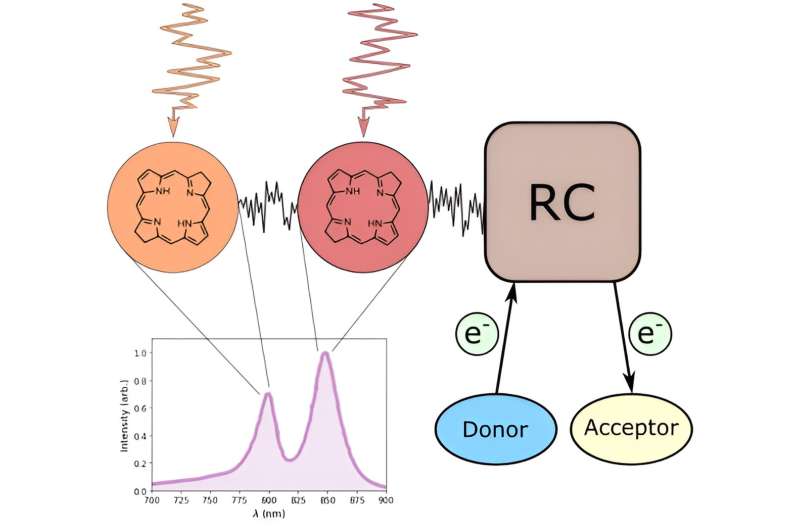Model of photosynthetic antenna suggests different types of plants may grow on Earth-like rocky planets

A small team of biologists, environmental scientists and chemists at Queen Mary University of London, U.K., has found via modeling, that it might be possible for different types of plants to grow on Earth-like rocky planets. In their paper published in Monthly Notices of the Royal Astronomical Society, the group describes how they modeled photosynthetic antenna, taking into account possible scenarios on planets in other star systems and the results of their experiments.
As scientists continue to consider the possibility of life existing somewhere other than Earth, they attempt to expand the possible scenarios under which life might exist. After all, the likelihood of life only existing on exoplanets that are nearly identical to Earth would seem to seriously limit the possibilities. In this new effort, the research team looked at the basic machinery involved in photosynthesis here on Earth and at possible changes to such a process that might allow different types of plants to grow on other worlds.
To create a model of photosynthesis that might include extraterrestrial plants, the researchers looked most specifically at photosynthetic antenna—the parts of a plant that are actively involved in harvesting light. On Earth, such antennae work only on light in the range from 400 nm to 700 nm.
They noted also that to date most goldilocks-zone exoplanets that have been observed circle red dwarfs, which emit light in wavelengths beyond 700 nm. That means that plants that process such light would need to be extremely efficient, and because of that, they likely would not be able to evolve beyond very basic structures. But the possibility exists for photosynthetic antenna that could work with gases other than oxygen, such as sulfur.
Under such scenarios, the plants using them would not be green—they might be purple, for example, or orange or red. It would depend on which wavelength of light they were using as their energy source. Such plants, they claim, would likely still need to extract nutrients from whatever type of soil they were growing on, though the types would be different from those on Earth.
The researchers suggest their model shows that the basic mechanics of photosynthetic antennae does allow for processing wavelengths of light in the ranges that shine on exoplanets that have already been observed—which means that new ways of studying them might be needed to detect the plants living on them.
More information: Christopher D P Duffy et al, Photosynthesis Under a Red Sun: Predicting the absorption characteristics of an extraterrestrial light-harvesting antenna, Monthly Notices of the Royal Astronomical Society (2023). DOI: 10.1093/mnras/stad2823
Journal information: Monthly Notices of the Royal Astronomical Society
© 2023 Science X NetworkLife can thrive around even the smallest stars, study claims
No comments:
Post a Comment